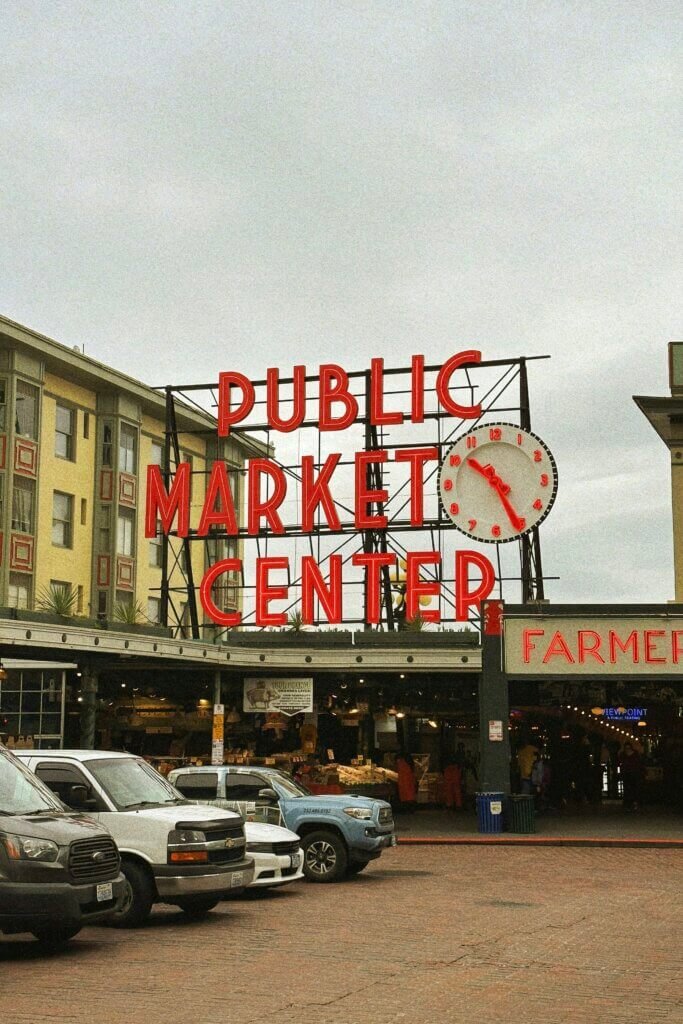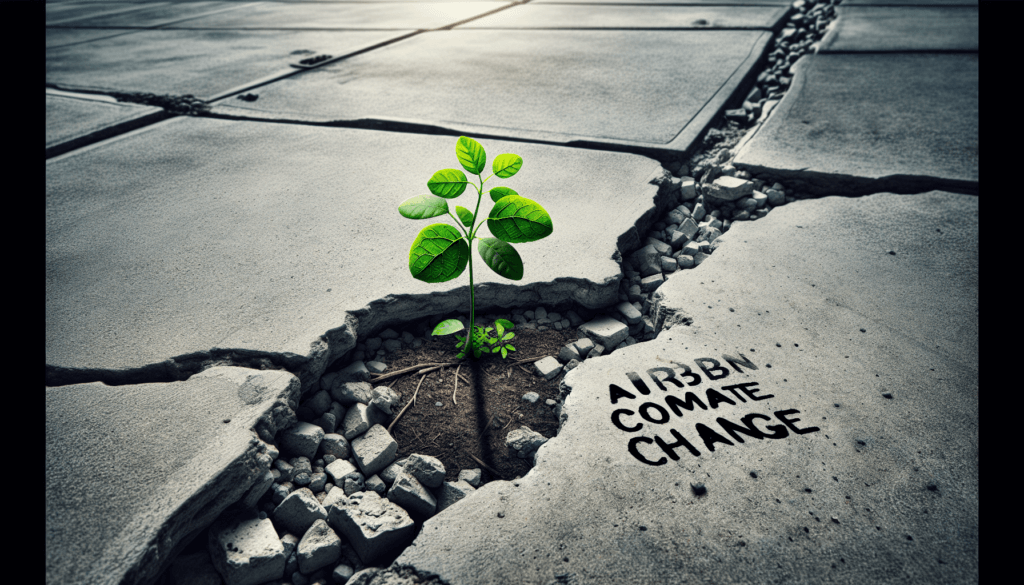Imagine living in a city where fresh, locally grown produce is readily available, where community gardens flourish on empty rooftops, and where the carbon footprint of food production is significantly reduced. Urban agriculture is stepping up to envision this sustainable future and playing a vital role in addressing the challenges posed by climate change. With its ability to promote food security, increase biodiversity, and reduce greenhouse gas emissions, urban agriculture is not just a trend but a necessary solution in our fight against climate change. In this article, we will explore the various ways urban agriculture is making a positive impact on our environment and paving the way towards a greener, more resilient future.

Reducing Greenhouse Gas Emissions
Decreasing the use of fossil fuels in transportation and distribution
One effective way to reduce greenhouse gas emissions is by decreasing the use of fossil fuels in transportation and distribution. Transportation and distribution are major contributors to greenhouse gas emissions, primarily through the burning of fossil fuels in vehicles and the energy required for transportation infrastructure. By promoting alternative modes of transportation such as cycling, walking, or using electric vehicles, we can significantly reduce carbon emissions. Additionally, implementing logistical strategies to optimize delivery routes and reduce the distance traveled can further decrease greenhouse gas emissions.
Reducing emissions from traditional agriculture practices
Traditional agriculture practices, such as the use of synthetic fertilizers and pesticides, contribute to greenhouse gas emissions. These chemical inputs release nitrous oxide, a potent greenhouse gas, into the atmosphere. By transitioning to more sustainable agricultural practices, such as organic farming methods, we can reduce emissions significantly. Organic farming eliminates the use of synthetic inputs, minimizing the release of greenhouse gases. Moreover, implementing regenerative agricultural practices, such as cover cropping and precision nutrient management, can further reduce emissions while also improving soil health.
Decreasing the transportation distance and food miles
Another effective strategy to reduce greenhouse gas emissions is by decreasing the transportation distance and food miles. Food miles refer to the distance food travels from production to consumption. By growing food closer to urban centers, we can drastically reduce the need for long-distance transportation. Urban agriculture, including rooftop gardens and community gardens, can provide fresh produce right within cities, minimizing the emissions associated with transporting food across long distances. Local food systems not only reduce greenhouse gas emissions but also support local economies and increase food security.
Promoting Sustainable Food Production
Encouraging organic farming methods
Promoting and encouraging organic farming methods is a crucial step in promoting sustainable food production. Organic farming avoids the use of synthetic fertilizers, pesticides, and genetically modified organisms, which can have detrimental effects on the environment and human health. By adopting organic farming methods, farmers can protect the soil, water, and biodiversity, while also promoting healthier and more nutritious food for consumers. Organic farming relies on natural processes, such as composting, crop rotation, and biological pest control, to maintain soil fertility and prevent the buildup of harmful chemicals in the environment.
Utilizing renewable energy sources
To further promote sustainable food production, it is essential to utilize renewable energy sources. Traditional agriculture relies heavily on fossil fuels for activities such as irrigation, machinery operation, and processing. By transitioning to renewable energy sources such as solar or wind power, the carbon footprint of these operations can be significantly reduced. Installing solar panels and wind turbines on farms can generate clean energy, reducing greenhouse gas emissions and decreasing reliance on non-renewable energy sources. These renewable energy systems can also provide farmers with a consistent and independent energy supply, reducing their operational costs in the long run.
Minimizing the use of chemical fertilizers and pesticides
Minimizing the use of chemical fertilizers and pesticides is another significant aspect of promoting sustainable food production. Chemical inputs not only harm the environment but can also degrade soil health and impact human health. By implementing integrated pest management techniques, farmers can reduce their reliance on synthetic pesticides and instead use biological controls, such as beneficial insects or natural predators, to manage pests. Additionally, adopting nutrient management practices that focus on the efficient use of organic amendments and precision agriculture technologies can minimize the need for synthetic fertilizers, resulting in lower greenhouse gas emissions and nutrient runoff into water bodies.
Enhancing Carbon Sequestration
Increasing vegetation cover and urban green spaces
Increasing vegetation cover and creating more urban green spaces is a crucial strategy for enhancing carbon sequestration. Plants naturally absorb carbon dioxide from the atmosphere through photosynthesis, storing carbon in their biomass and in the soil. By increasing vegetation cover in urban areas through initiatives like tree planting programs or green roof installations, we can effectively capture and store more carbon. Urban green spaces also provide numerous environmental benefits, such as air purification, temperature regulation, and habitat creation for wildlife.
Promoting urban reforestation
Urban reforestation plays a vital role in enhancing carbon sequestration and mitigating climate change. Planting trees in urban areas not only enhances the beauty and livability of cities but also helps sequester carbon dioxide. Trees absorb carbon dioxide and release oxygen through photosynthesis, effectively reducing greenhouse gas concentrations in the atmosphere. Additionally, urban reforestation contributes to improved air quality, reduced urban heat island effects, and increased biodiversity within cities. Engaging communities in tree planting initiatives can foster a sense of stewardship and environmental responsibility among residents.
Improving soil health and organic matter content
Improving soil health and increasing organic matter content is essential for enhancing carbon sequestration. Healthy soils rich in organic matter can effectively sequester carbon for long periods. Practices such as cover cropping, composting, and reduced tillage can improve soil structure, increase water-holding capacity, and promote the growth of beneficial soil microorganisms. These practices contribute to the sequestration of carbon in the form of stabilized organic carbon. By focusing on soil health and implementing regenerative agricultural practices, we can enhance carbon sequestration while also promoting sustainable and resilient agricultural systems.
Alleviating Urban Heat Island Effect
Providing shade from urban agriculture structures
One way to alleviate the urban heat island effect is by providing shade from urban agriculture structures. Urban agriculture, such as rooftop gardens or vertical farms, can help reduce the temperature in cities by providing shade to buildings and streets. Vegetation in these agricultural structures absorbs solar radiation, preventing it from being absorbed by inanimate urban surfaces, which can contribute to increased temperatures. Additionally, the transpiration of plants cools the surrounding air, creating a more pleasant and comfortable urban environment.
Reducing the need for air conditioning
Urban agriculture can also alleviate the urban heat island effect by reducing the need for air conditioning. The cooling effect of vegetation in urban agriculture structures can help lower ambient temperatures, reducing the demand for air conditioning in nearby buildings. By reducing the use of air conditioning, energy consumption and greenhouse gas emissions can be minimized. This not only benefits the environment but also reduces electricity costs for building owners and occupants.
Evapotranspiration and cooling effect of plants
The evapotranspiration process, where plants release water vapor through their leaves, plays a significant role in cooling the urban environment. Urban agriculture, with its abundance of vegetation, can contribute to increased evapotranspiration rates, effectively cooling the surrounding air. The cooling effect of plants and the increased humidity can help counteract the heat island effect, making urban areas more comfortable and reducing the energy demands for cooling. By incorporating urban agriculture into city planning and design, we can harness these cooling benefits and create more sustainable and resilient urban environments.

Reducing Food Waste and Loss
Growing food closer to urban centers to reduce spoilage
Growing food closer to urban centers is a key strategy for reducing food waste and loss. When food has to travel long distances from rural areas to reach urban markets, it is more prone to spoilage and damage, leading to higher food waste. By cultivating food within or near urban areas, farmers can harvest fresh produce that reaches consumers quickly, minimizing the chances of spoilage and reducing food waste. Urban agriculture, such as community gardens or vertical farms, can play a significant role in providing locally grown food, increasing food security, and reducing waste.
Implementing efficient harvest and storage practices
Efficient harvest and storage practices are crucial for reducing food waste and loss. Proper techniques and equipment can ensure that crops are harvested at their peak condition, minimizing post-harvest losses. Additionally, adopting appropriate storage methods, such as temperature-controlled facilities or improved packaging, can prolong the shelf life of perishable goods and reduce spoilage. By implementing efficient harvest and storage practices, farmers and food producers can minimize waste, enhance food quality, and increase the availability of fresh produce for consumers.
Promoting community gardens for shared resources
Community gardens offer an excellent opportunity to reduce food waste and loss while promoting community engagement and shared resources. These communal spaces allow individuals to grow their food in a shared garden, fostering a sense of community and connection among residents. By participating in community gardens, individuals can harvest only what they need, reducing waste, and sharing surplus produce with others who may need it. Community gardens not only provide access to fresh and nutritious food but also encourage sustainable practices and environmental stewardship within local communities.
Enhancing Local Food Security
Reducing dependency on external food sources
Enhancing local food security involves reducing dependency on external food sources. Relying heavily on long-distance food transportation can pose risks such as disruptions in supply chains, price fluctuations, and environmental impacts. By promoting local food production, we can diversify our sources of food and reduce vulnerability in times of crisis. Investing in urban agriculture initiatives, supporting local farmers, and strengthening regional food networks are essential steps toward building resilient and self-sufficient food systems.
Ensuring availability of fresh and nutritious food
Promoting local food production through urban agriculture ensures the availability of fresh and nutritious food for urban populations. Traditional food supply chains often prioritize shelf life and durability over nutritional quality. By growing food closer to urban centers, farmers can harvest it at its peak ripeness, maximizing its nutritional value. Additionally, urban agriculture allows for the cultivation of a wider variety of crops, including nutrient-dense fruits, vegetables, and herbs that are not commonly found in mainstream grocery stores. This ensures that urban residents have access to a diverse range of fresh and healthy food options.
Providing affordable food options in urban areas
Urban agriculture plays a vital role in providing affordable food options for residents in urban areas. Food insecurity and limited access to fresh, nutritious food are prevalent in many urban communities, especially in low-income neighborhoods known as food deserts. By implementing urban agriculture initiatives, such as community gardens or urban farms, we can create local food production hubs that offer affordable and accessible food options for underserved populations. These initiatives not only address food security but also promote economic empowerment, community development, and improved health outcomes.

Increasing Biodiversity
Creating habitats for pollinators and beneficial insects
Urban agriculture can contribute to increasing biodiversity by creating habitats for pollinators and beneficial insects. Bees, butterflies, and other pollinators play a crucial role in plant reproduction and maintaining ecological balance. By planting native flowering plants and providing suitable habitats within urban agriculture spaces, we can attract and support pollinators, ensuring the pollination of crops and the sustainability of urban ecosystems. Additionally, promoting beneficial insects such as ladybugs or lacewings can help control pests naturally, reducing the reliance on synthetic pesticides.
Preserving native plant species
Preserving native plant species is essential for supporting biodiversity in urban areas. Native plants have adapted to local climates and ecosystems, providing food sources and habitats for local wildlife. By incorporating native plants into urban agriculture initiatives, we can contribute to the preservation of native biodiversity, support local ecosystems, and create a more resilient and sustainable urban environment. Native plants also require less maintenance and are better suited to local climate conditions, reducing the need for excessive water or chemical inputs.
Supporting urban wildlife diversity
Urban agriculture can support urban wildlife diversity by providing food, shelter, and nesting sites for a variety of species. Birds, insects, and small mammals can find refuge and sustenance in urban agriculture spaces, enhancing urban biodiversity. By designing and managing urban agriculture areas with wildlife in mind, we can create corridors and habitats that support the movement and survival of various species. The presence of wildlife in urban areas not only contributes to the ecological health of cities but also enriches the urban experience and fosters a deeper connection with nature.
Building Resilient Communities
Promoting community engagement and social cohesion
Promoting community engagement and social cohesion is crucial for building resilient communities through urban agriculture. Urban agriculture initiatives bring people together, fostering a sense of shared purpose and identity. Community gardens, farmers’ markets, or agricultural cooperatives provide opportunities for community members to participate, collaborate, and learn from each other. By engaging in urban agriculture, individuals can develop meaningful connections, build social networks, and collectively address community challenges, including climate change.
Generating employment and economic opportunities
Urban agriculture can generate employment and economic opportunities, particularly in areas with limited job prospects. As urban agriculture continues to grow, new positions can be created in farming, food processing, distribution, and marketing. By supporting and investing in local food production, cities can create a more resilient and sustainable economy, reduce unemployment rates, and address social inequities. Additionally, urban agriculture can empower individuals and communities to generate income, build skills, and develop entrepreneurship opportunities related to sustainable food production.
Providing educational and skill-building platforms
Urban agriculture serves as an educational and skill-building platform, fostering lifelong learning and empowering individuals with knowledge and practical skills. Schools, community centers, and urban farms can offer workshops, training sessions, and hands-on experiences that teach individuals about sustainable food production, environmental stewardship, and healthy living. By providing educational opportunities through urban agriculture, we can empower individuals to make informed choices about their food, health, and environment, creating a more environmentally conscious and resilient society.

Mitigating Urban Stormwater Runoff
Absorbing rainwater, reducing floods, and erosion
Urban agriculture can play a significant role in mitigating urban stormwater runoff by absorbing rainwater and reducing floods and erosion. The vegetation in urban agriculture spaces absorbs and holds rainwater, allowing it to infiltrate the soil gradually. This reduces the volume and speed of stormwater runoff, preventing flooding and erosion. Additionally, the root systems of plants help stabilize the soil, reducing soil erosion during heavy rainfall events. By incorporating green infrastructure, such as rain gardens, bioswales, or permeable pavement, into urban agriculture designs, we can effectively manage stormwater and create more sustainable urban environments.
Filtering pollutants and improving water quality
Urban agriculture can contribute to improving water quality by filtering pollutants from stormwater runoff. As rainwater percolates through the soil, it undergoes natural filtration, removing sediments, nutrients, and pollutants before it reaches water bodies. The root systems of plants in urban agriculture spaces help facilitate this filtration process, removing harmful substances from the water. By implementing urban agriculture practices that prioritize soil health and biodiversity, we can enhance the natural filtration capacity of urban landscapes, improving the quality of water resources and reducing the impact of pollution on ecosystems.
Utilizing green infrastructure for water management
Green infrastructure, integrated within urban agriculture spaces, can effectively manage water resources and mitigate the impacts of stormwater runoff. Green roofs, rain gardens, and wetlands play a crucial role in capturing and absorbing rainwater, reducing runoff, and supporting biodiversity. These green infrastructure elements mimic natural hydrological processes, collecting rainwater and allowing it to slowly infiltrate into the soil or evaporate, reducing the strain on conventional stormwater management systems. By integrating green infrastructure into urban agriculture designs, we can create more sustainable and resilient cities while also improving water quality and preserving natural habitats.
Addressing Food Deserts
Creating access to fresh food in underserved neighborhoods
Addressing food deserts requires creating access to fresh food in underserved neighborhoods. Food deserts, typically found in low-income communities, are areas where residents have limited access to affordable and nutritious food. Urban agriculture can provide a solution by bringing fresh produce directly to these communities. By establishing community gardens, urban farms, or mobile markets in food desert areas, we can ensure that residents have access to fresh, healthy food options. This approach not only addresses food insecurity but also promotes equitable food access and enhances the overall well-being of underserved populations.
Reducing food insecurity and malnutrition
Urban agriculture plays a crucial role in reducing food insecurity and malnutrition, particularly in areas with limited access to fresh produce. By growing food locally through urban agriculture initiatives, we can increase the availability of nutritious food, empowering individuals to make healthier food choices. This can help combat malnutrition and improve overall health outcomes within communities, especially among vulnerable populations. Additionally, urban agriculture projects can offer educational programs and resources that promote food literacy, teaching individuals about nutrition, meal preparation, and sustainable food practices.
Improving public health outcomes
Urban agriculture has the potential to improve public health outcomes by addressing food deserts and promoting healthier lifestyles. Access to fresh, nutritious food is a key determinant of public health, influencing the prevalence of diet-related diseases and overall well-being. By increasing the availability of fresh produce in urban areas through community gardens, farmers’ markets, or urban farms, we can encourage healthier eating habits and contribute to the prevention of chronic diseases. Engaging in urban agriculture activities also provides opportunities for physical activity, stress reduction, and social interaction, all of which have positive impacts on mental and emotional health.



